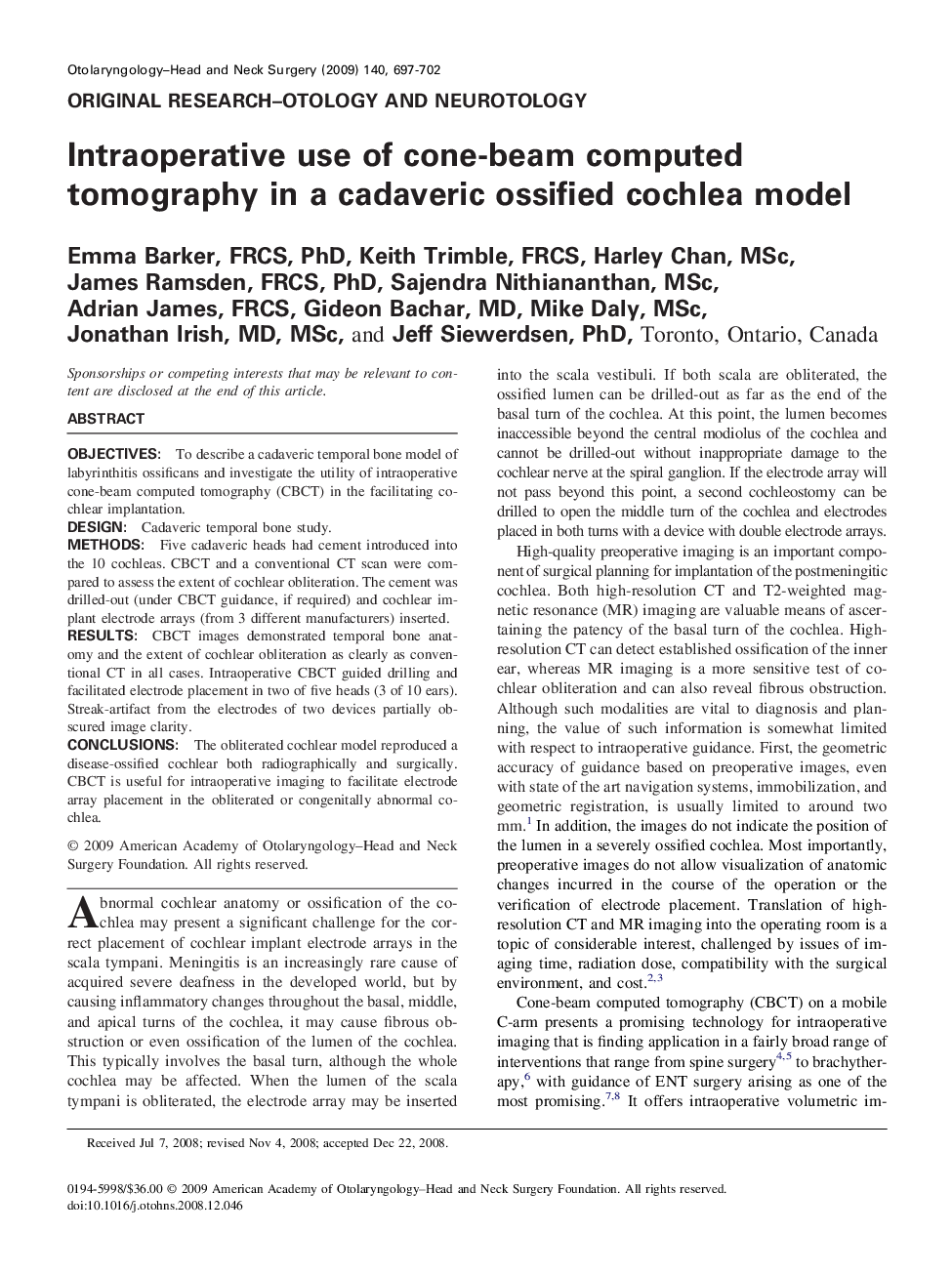| کد مقاله | کد نشریه | سال انتشار | مقاله انگلیسی | نسخه تمام متن |
|---|---|---|---|---|
| 4125780 | 1270696 | 2009 | 6 صفحه PDF | دانلود رایگان |

ObjectivesTo describe a cadaveric temporal bone model of labyrinthitis ossificans and investigate the utility of intraoperative cone-beam computed tomography (CBCT) in the facilitating cochlear implantation.DesignCadaveric temporal bone study.MethodsFive cadaveric heads had cement introduced into the 10 cochleas. CBCT and a conventional CT scan were compared to assess the extent of cochlear obliteration. The cement was drilled-out (under CBCT guidance, if required) and cochlear implant electrode arrays (from 3 different manufacturers) inserted.ResultsCBCT images demonstrated temporal bone anatomy and the extent of cochlear obliteration as clearly as conventional CT in all cases. Intraoperative CBCT guided drilling and facilitated electrode placement in two of five heads (3 of 10 ears). Streak-artifact from the electrodes of two devices partially obscured image clarity.ConclusionsThe obliterated cochlear model reproduced a disease-ossified cochlear both radiographically and surgically. CBCT is useful for intraoperative imaging to facilitate electrode array placement in the obliterated or congenitally abnormal cochlea.
Journal: Otolaryngology - Head and Neck Surgery - Volume 140, Issue 5, May 2009, Pages 697–702